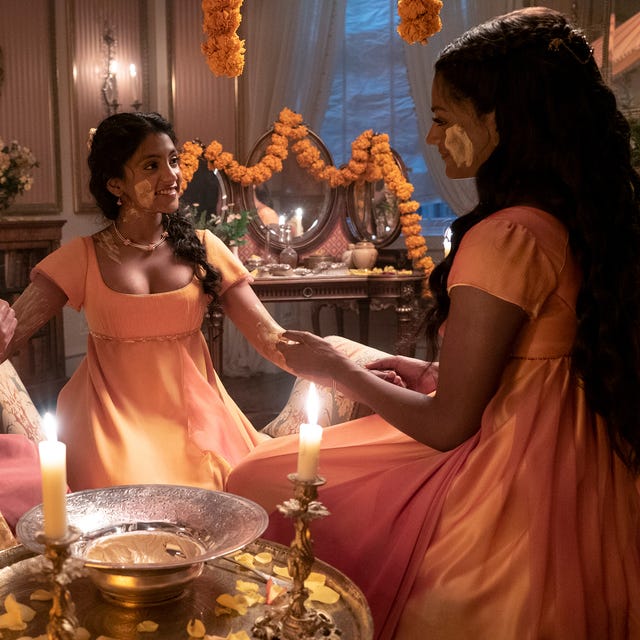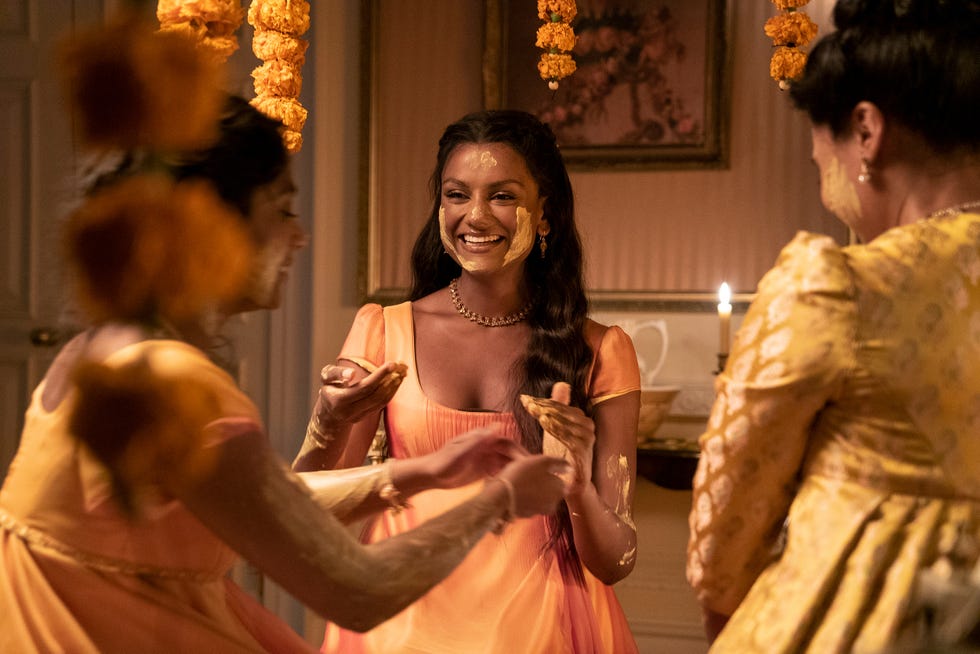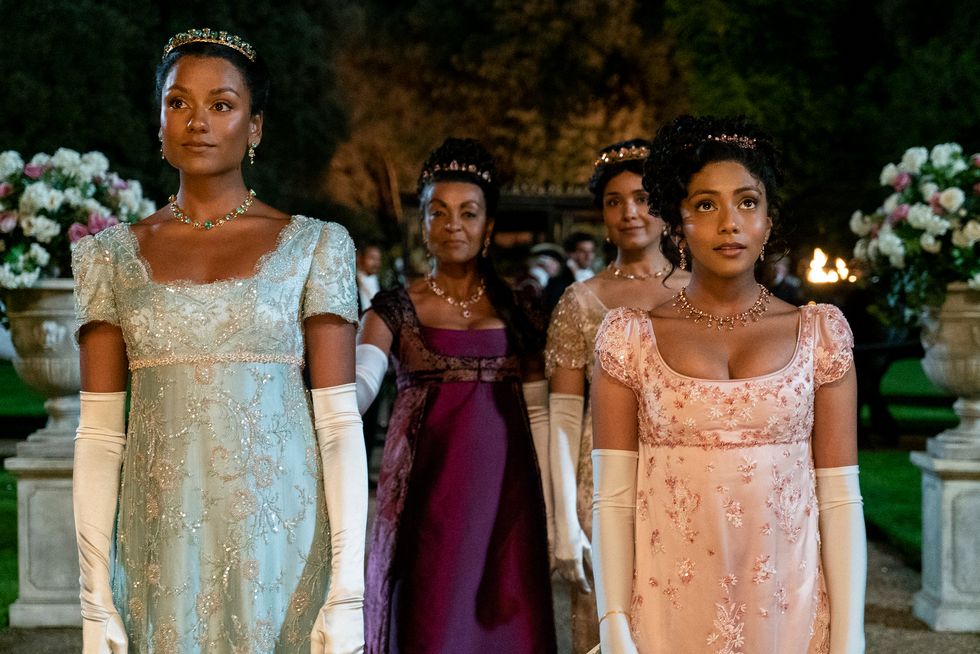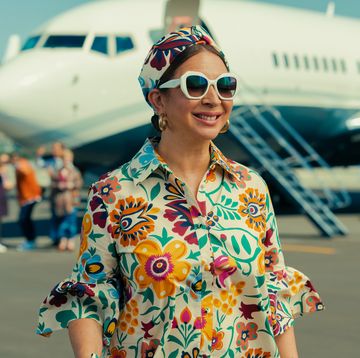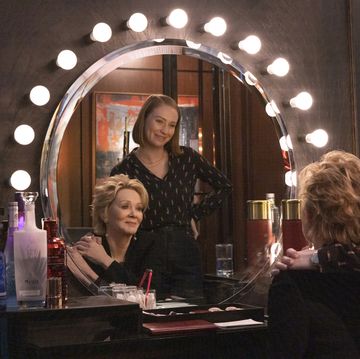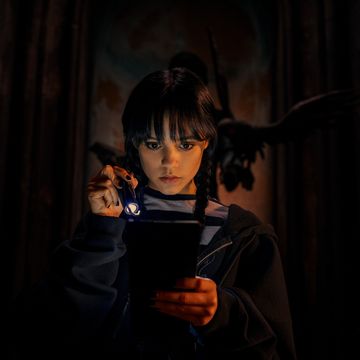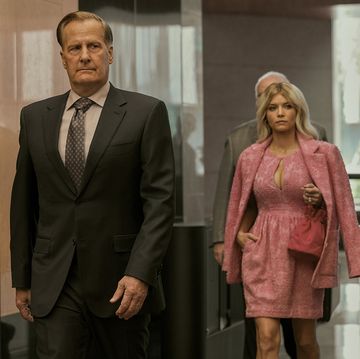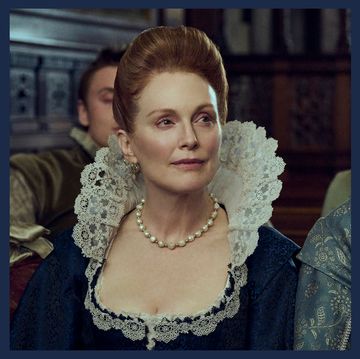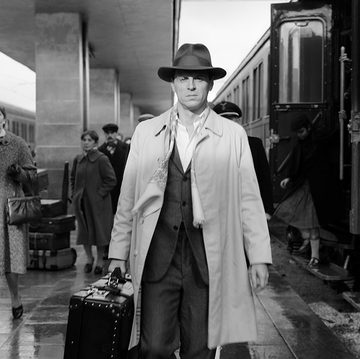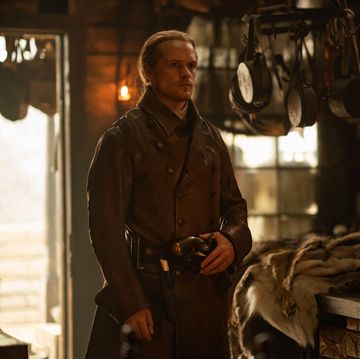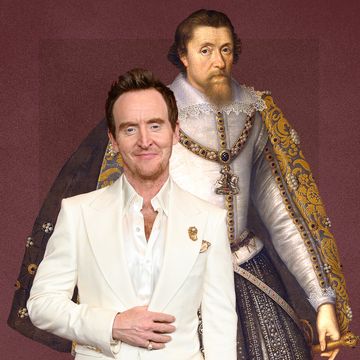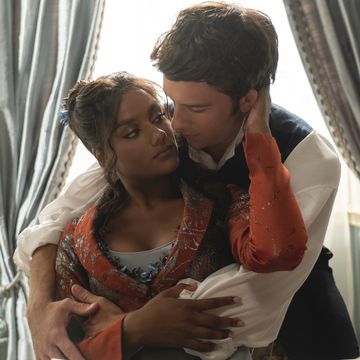Bridgerton, the raunchy regency romp, returned for its second season this week and it’s as addictively scandalous as ever. Season one of the Shondaland production already made waves for its incorporation of people of color into a genre traditionally dominated by white faces, and lead actor Regé-Jean Page’s star saw a stratospheric rise. Season two once again embraces this diversity wholeheartedly with the introduction of the Sharma family: Kate (Simone Ashley), younger sister Edwina (Charithra Chandan), and mother Mary (Shelley Conn). Known to readers of Julia Quinn’s books as the Sheffields, the Netflix show reimagines the debutantes as new arrivals to the ton from India, with Kate determined to find Edwina a suitable husband.
The new episodes double down on the romance, froth, and scandal that made season one so popular, but the Sharmas bring a distinctly new flavor in the shape of a throughline of Indian culture in the plot. And fortunately, the representation runs deeper than a lip service paid in the form of the characters’ casting and last name. Homage is paid to Indian culture throughout the season, and perhaps nowhere more noticeably than in a scene ahead of Edwina and Anthony’s wedding in episode six. The night before the marriage ceremony, the Sharma women gather together and smear turmeric paste on Edwina’s arms and face. The ritual, called a Haldi ceremony (Haldi means turmeric in Hindi), is a traditional Indian pre-wedding event, believed to bestow blessings upon the married couple. Indian viewers might also catch that the string music playing in the background of the scene is an orchestral cover of “Kabhi Khushi Kabhie Gham,” a wildly popular Bollywood song from the 2001 film of the same name, a surprising inclusion in a soundtrack whose other covers pull from artists such as Harry Styles and Madonna.
Bridgerton wasn’t a conventional Regency show to begin with, already imbued with a degree of diversity and modernity not usually associated with Western period pieces, but for me, having grown up on parallel, separate-but-equal diets of Bollywood and BBC shows, the collision of the two was remarkable. The idea that it is “historically accurate” to exclude people of color from such shows is as inaccurate as it is pervasive. Even when people of color are included in these stories, seldom is there any effort made to give them narratives that don’t revolve around oppression or subservience. What’s refreshing about Bridgerton is that its origins in romance novels mean it lives happily in the realm of fantasy and escapism, and the Sharma sisters are allowed to revel in that front-and-center. Edwina is the Diamond of the season; Kate is the romantic heroine at the heart of the story. And their story comes not at the expense of their Indian heritage, but in service of it.
The Haldi scene is an unusually small moment compared to the way Indian weddings are usually represented in Western media, when they are shown at all. It is just the three women, carrying out a ritual in a foreign land where the sum total of their cultural rooting is each other. The UK is home to over 1.4 million Indian immigrants, my own family among them, and the poignancy of the moment resonates. The importance of family is deeply ingrained in Indian culture, and our weddings are typically the biggest manifestations of that. There is no ceremony that doesn’t revolve around the celebration and blessings of family. For the Indian diaspora, therefore, the separation from our community can be especially acute. Watching the Sharma women perform the Haldi ceremony, relying on each other for support even more heavily for being so isolated in the heart of London, was potent representation. It was more than simply seeing a ceremony I’m familiar with carried out on screen; it was watching a lived experience that lingers widespread but often unspoken under the skin of the Indian diaspora. It was as bittersweetly recognizable as it was exciting.
And it’s hard to understate how excited I was. Having grown up in the UK, I was constantly immersed in Jane Austen adaptations and British literature. The trappings of Regency shows have been as steady and comfortable a source of escapism to me as Cinderella’s castle or Hogwarts. Period dramas hold a unique appeal to fans; there is a romantic charm to the intricacies of afternoon tea or the gossip of royal courts. All these motifs are so distinct, so integral to the DNA of the genre, that it never even occurred to me to look for any reflection of myself among them. Colorful rows of my mother’s bangles had no place against empire waist dresses in pastel palettes. When the Lizzies and Darcies or Emmas and Knightleys of the world got married, I would never see the saris and the marigolds and the musicians and, yes, the Haldi, that weddings signified to me.
Except now, I have. In the larger scope of the season, the Haldi ceremony is just one scene, a sweet precursor to a wedding that, to the audience's relief—spoiler alert—does not actually happen. But in it, Edwina calls Kate didi, the same thing my younger sister used to call me, and Kate slides on a pair of her mother’s traditional bangles. A Bollywood song familiar to just about every Indian in the diaspora strums in the background. Three Indian women, a tiny family in a foreign land, celebrate their culture on a stage as big and beautiful as Bridgerton. And for the first time, it feels like the love story and the fantasy of a genre I’ve adored for years belongs, for this moment, to me.
